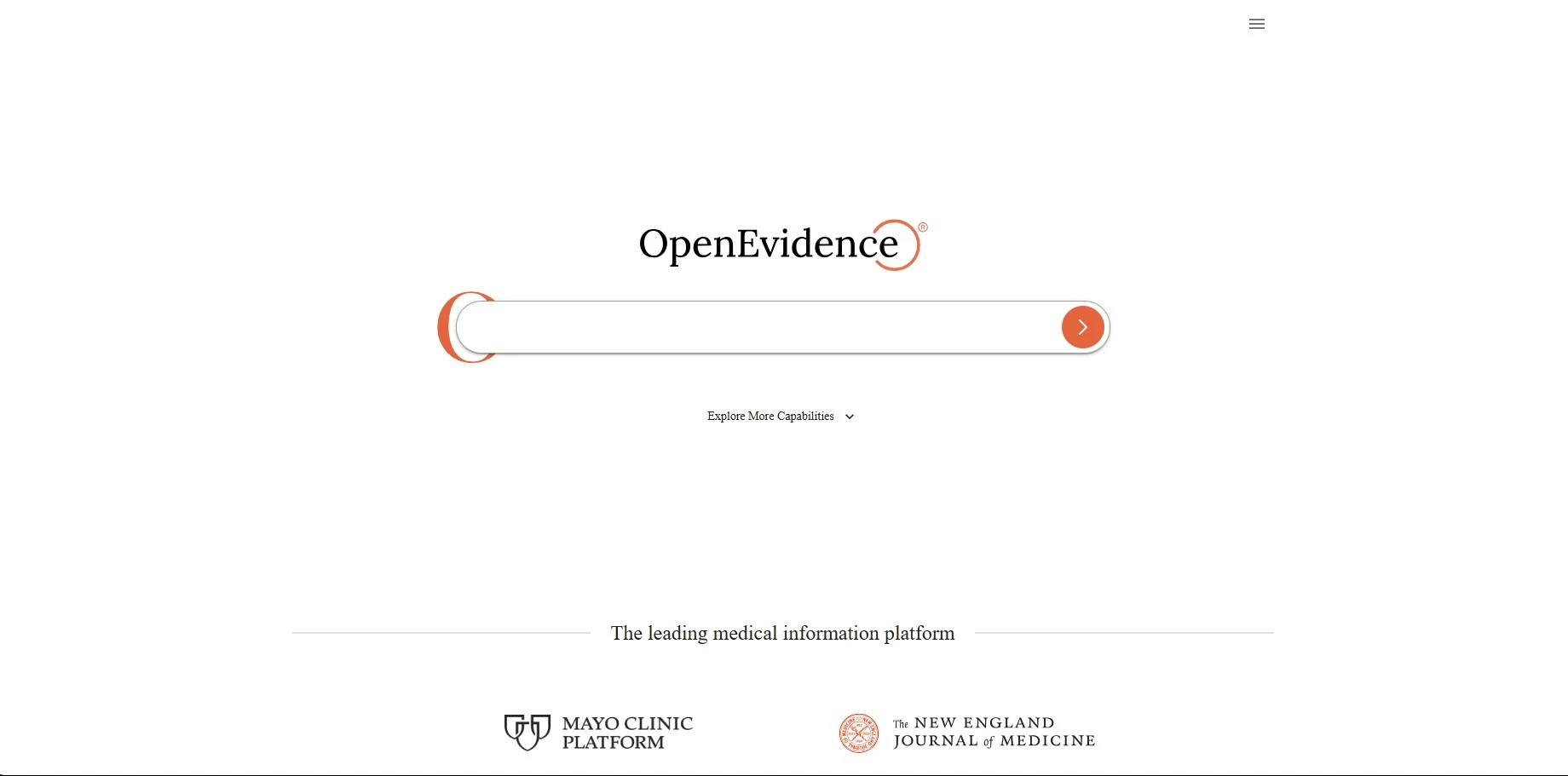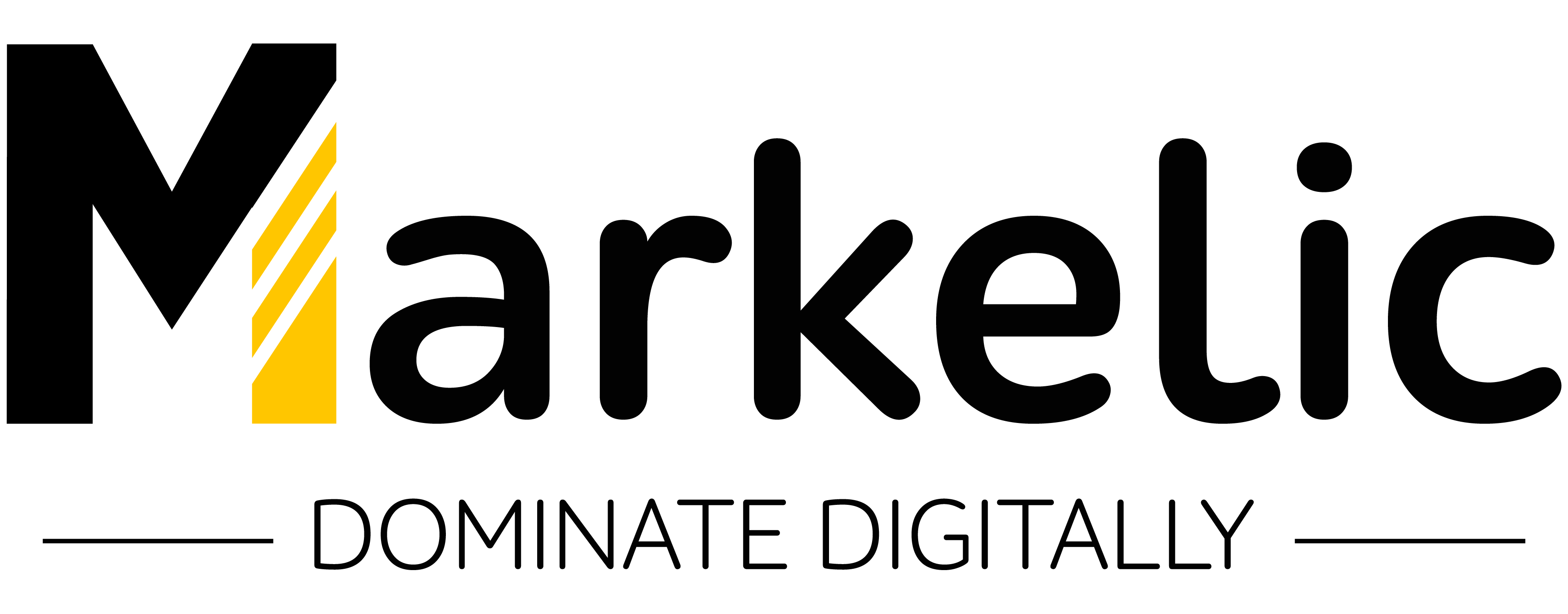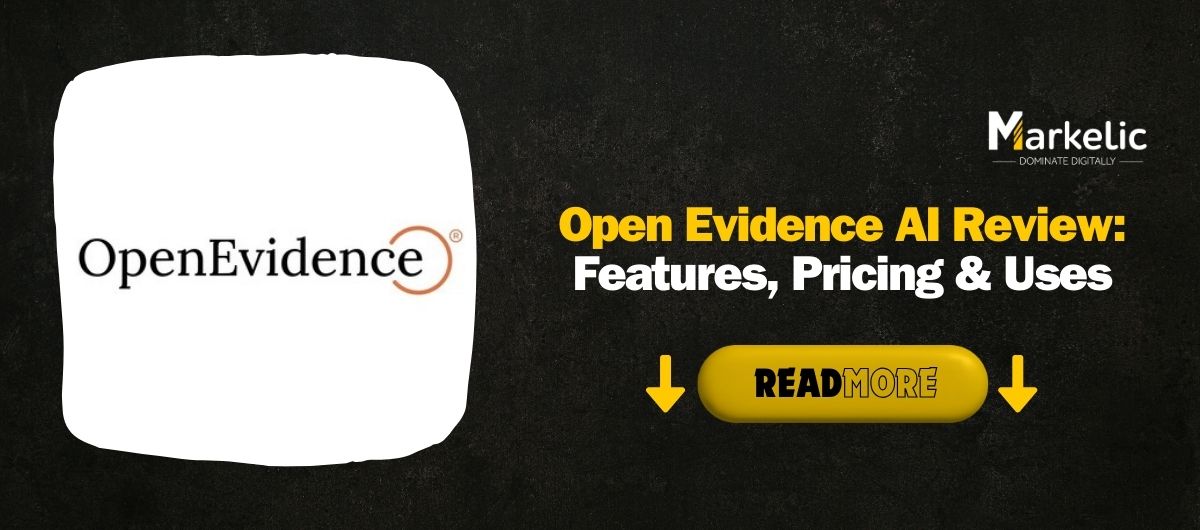As a medical professional, I know how challenging it can be to sift through countless research papers to find reliable information. That’s where Open Evidence AI comes in. This AI-powered platform simplifies medical literature searches, providing quick, well-cited answers based on peer-reviewed sources. In this Open Evidence AI review, I’ll walk you through its features, pricing, and practical uses to help you determine if it’s the right tool for you.

Open Evidence AI Features
1. AI-Powered Medical Literature Search
One of the standout Open Evidence AI features is its natural language processing (NLP) capability. You can ask medical questions in plain language, and the AI scans through vast databases of peer-reviewed research to deliver accurate and relevant answers.
2. Summarized and Citable Answers
The AI doesn’t just retrieve research—it summarizes key findings and provides proper citations, ensuring the information remains credible and easy to reference.
3. Interactive and Transparent Information
Unlike traditional search engines, Open Evidence AI allows users to interrogate sources. You can see exactly where the information comes from and even ask follow-up questions for more clarity.
4. Peer-Reviewed Focus
Accuracy matters in medicine, and Open Evidence AI ensures that its data is sourced strictly from peer-reviewed medical literature. This helps in reducing misinformation and enhances trust among users.
5. User-Friendly Interface
Even for those who aren’t tech-savvy, Open Evidence AI is easy to navigate. The platform is designed for quick searches, smooth navigation, and intuitive interaction.
Open Evidence AI Pricing or Cost
The best part? Open Evidence AI is currently free for early adopters! If you’re a licensed medical professional or a verified medical student, you can access the platform at no cost.
This is a huge advantage compared to other medical research tools like UpToDate, which costs around $559 per physician per year. While Open Evidence AI is still in its early adoption phase, this free access makes it an excellent choice for medical professionals and students looking for an AI-powered research assistant.
Open Evidence AI Use Cases

1. Quick Clinical Decision Support
Doctors and healthcare professionals can use Open Evidence AI to quickly find answers to clinical questions without spending hours reading multiple research papers.
2. Medical Education and Research
Medical students can leverage Open Evidence AI to enhance their studies by accessing summarized research and staying up-to-date with the latest findings.
3. Evidence-Based Practice
For professionals who prioritize evidence-based medicine, Open Evidence AI ensures that every answer is backed by reliable, peer-reviewed sources.
4. Enhancing Patient Care
By providing accurate and up-to-date medical information, Open Evidence AI helps healthcare providers make more informed treatment decisions, ultimately improving patient care.
Strengths and Limitations
Strengths:
✔ Efficiency: Saves time by summarizing research findings.
✔ Transparency: Users can check references and validate the information.
✔ Up-to-date: Ensures access to the latest medical literature.
✔ Cost-Effective: Free for early adopters, making it highly accessible.
Limitations:
✖ Opaque Curation Process: Some users may find it unclear how certain sources are prioritized.
✖ No CME Credits: Unlike some other tools, it doesn’t provide continuing medical education (CME) credits.
✖ Potential AI Hallucination: As with any AI tool, there’s always a risk of incorrect or misleading answers. Users should cross-check important information.
Final Verdict: Is Open Evidence AI Worth It?
Absolutely! Open Evidence AI is a game-changer for medical professionals and students who need quick, reliable, and peer-reviewed medical insights. While it has some limitations, its ease of use, transparency, and zero-cost access make it an invaluable tool for evidence-based decision-making.
If you’re in the medical field, I highly recommend giving Open Evidence AI a try—after all, it’s free for now, so why not make the most of it?
Read More: Cheateye AI Review
Frequently Asked Questions: Open Evidence AI
What is Open Evidence AI?
Open Evidence AI is an AI-powered platform that helps medical professionals and students quickly find accurate, peer-reviewed research answers by asking questions in plain language. It uses advanced natural language processing (NLP) to simplify and summarize complex medical literature.
How does Open Evidence AI work?
The platform allows users to ask medical questions in everyday language. It then searches through verified databases of peer-reviewed studies and provides summarized answers along with citations, making it easier to access and trust the information.
Who can use Open Evidence AI for free?
Currently, Open Evidence AI is free for licensed medical professionals and verified medical students as part of its early adopter program. This gives users access to powerful research tools without the high cost of traditional platforms.
What makes Open Evidence AI different from other medical research tools?
Unlike tools like UpToDate, Open Evidence AI:
Is built specifically with AI and transparency in mind
Is free for early users
Provides summarized and citable answers
Allows users to see and interrogate the original sources
What types of questions can I ask Open Evidence AI?
You can ask clinical, research-based, or educational questions in natural language. Whether you’re looking for treatment options, understanding a condition, or seeking recent studies, the AI will search relevant peer-reviewed literature to provide accurate answers.
Is the information provided by Open Evidence AI reliable?
Yes. Open Evidence AI pulls data strictly from peer-reviewed medical journals, helping reduce misinformation and ensuring that all responses are backed by credible sources. However, users are still encouraged to verify critical information.
Can Open Evidence AI be used for clinical decision-making?
Yes. The platform is particularly useful for quick clinical support, helping doctors and healthcare providers make informed decisions by providing up-to-date, summarized medical evidence in seconds.
What are some common use cases for Open Evidence AI?
Doctors: Fast access to clinical evidence
Students: Study aid and simplified research summaries
Researchers: Literature reviews and citation-ready findings
Educators: Reliable content for lectures or assignments
Are there any limitations to using Open Evidence AI?
Yes. Some limitations include:
Occasional AI-generated errors (“hallucinations”), as with any AI tool
Lack of CME (Continuing Medical Education) credits
Limited transparency on how sources are ranked or selected
Is Open Evidence AI better than UpToDate or other paid tools?
While both tools have their strengths, Open Evidence AI is a strong alternative—especially for those looking for a free, AI-powered, and citation-backed solution. However, it does not currently offer CME credits, which some professionals may need.


